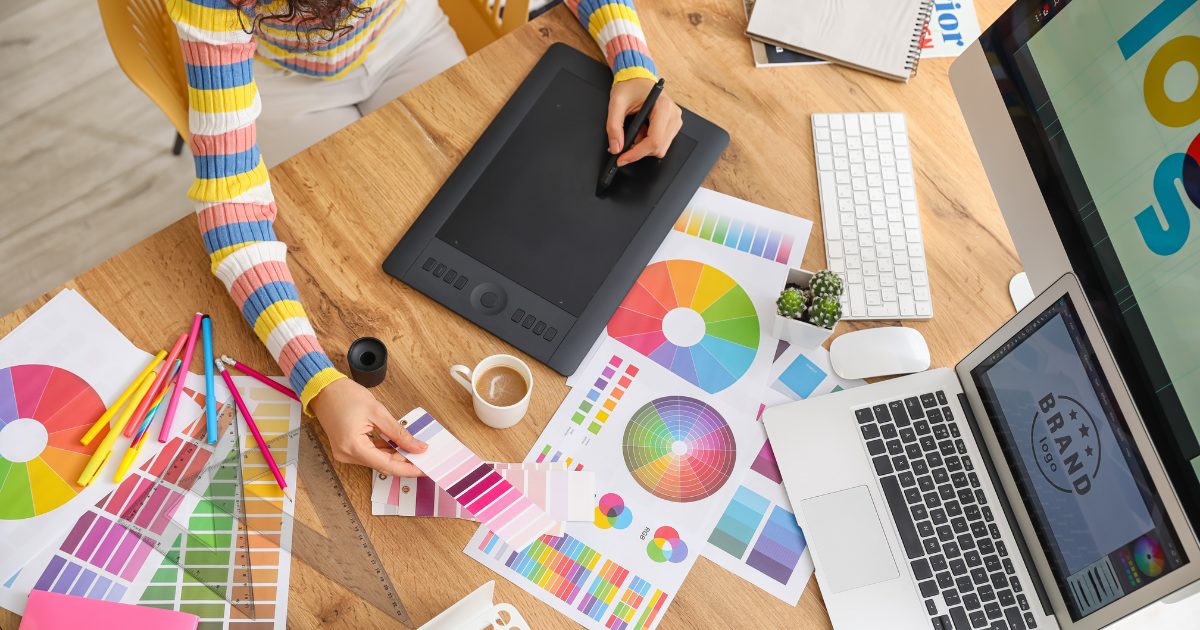Every 27 April is World Graphic Design Day, a date to recognise the work of those who give visual form to the ideas, brands and messages that surround us. But beyond recognition, it is also an opportunity to reflect on the importance of responsible, functional and purposeful design. For this reason, we share ten professional tips that can help you improve your creative processes and design with greater solidity.
Design with a why
Before opening any programme, ask yourself what the purpose of your design is, what it should communicate and to whom it is addressed. Graphic design is not just aesthetics: it is visual communication. A beautiful design that doesn’t work is like a book with a spectacular cover but no story.
Visual hierarchy: your best ally
Good designs guide the eye. Play with sizes, weights, spaces and colours to establish a clear hierarchy. The reader or user should know where to look first and what is most important. Remember: order is not only aesthetic, it is functional.
Less is more (but with intention)
Knowing how to reduce without losing the message is one of the most valuable skills. It is not about emptying, but synthesising.
Take care of white space
White space (or negative space) is not an unused gap, it is a key element in design. It allows you to breathe, organises content and adds elegance.
Typography is a voice: choose it wisely.
An institutional headline is not the same as a festival poster. Each type has its tone, its character and its intention. Learn how to combine typefaces and, above all, how to choose the right one for each context.
Think in systems, not in isolated pieces.
A poster is not just a poster. It is part of an identity, a series of materials, a visual language. Designing with a systems view will help you maintain visual coherence in complex projects.
The colour palette is not just a matter of aesthetics.
Colour communicates emotions, activates memories and guides decisions. Learn about colour theory, contrast, accessibility and cultural meanings. And above all, test: what works on screen doesn’t always work in print or on other platforms.
Test and correct
Design takes time and trial and error. Don’t stick with the first version. Test it, print it, share it. A second (or third) look can help you spot unseen problems in the process.
Keep up to date, but not enslaved by trends
Being aware of current visual trends is useful, but it doesn’t mean you have to follow them all. Good design transcends trends. Be inspired, but keep your judgement.
The best tool is your critical thinking
Beyond Adobe, Figma or any software, your most powerful tool is your ability to analyse, synthesise and decide. Always ask yourself: does it make sense, is it doing its job, is it consistent with the message and the brand?
On World Graphic Design Day, let’s celebrate the power of visual communication done right. Design is more than aesthetics: it is strategy, empathy, language and responsibility.

